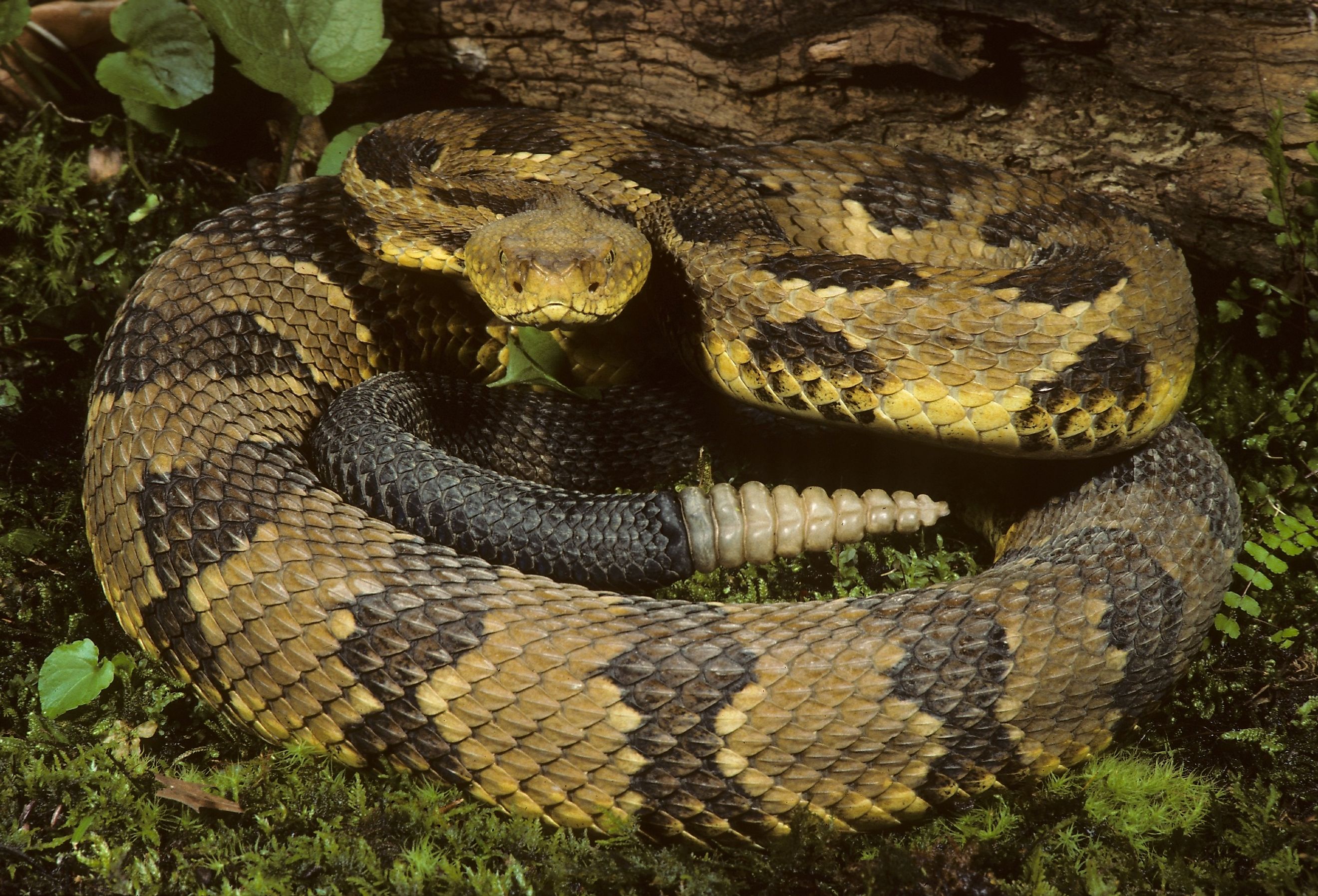
The Most Snake Infested Lakes in New Jersey
New Jersey has a diverse ecosystem, including being home to many amphibians and reptiles. Most snakes in the Garden State are harmless and play a crucial role in the ecosystem. However, some areas provide a habitat for venomous snakes and are more densely populated than others. For example, around Round Valley Reservoir, you may run into venomous copperhead snakes, and at Atsion Lake, you may even spot a timber rattlesnake. However, these outdoor areas also present plenty of recreational opportunities, so don't let the slithering wildlife keep you from visiting.
Whether you are a nature enthusiast, a herpetologist, or just curious about what to look out for on your next vacation to the state, discover some of the most snake-infested lakes in New Jersey.
Lake Hopatcong
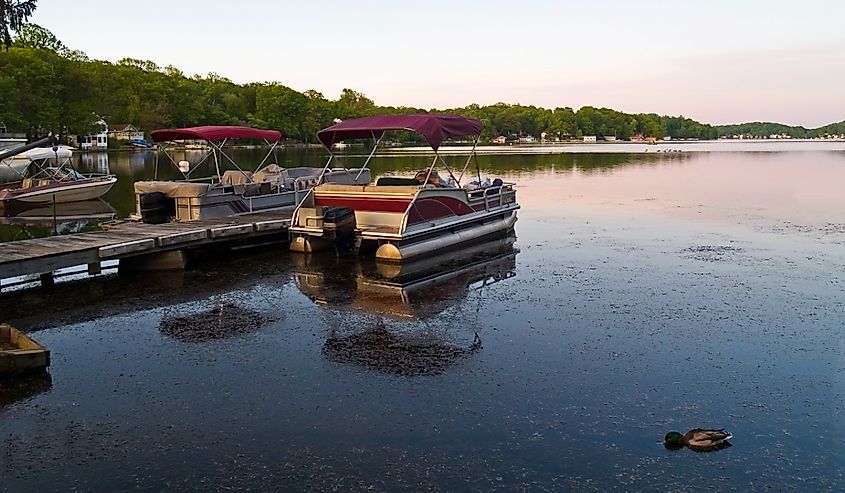
The largest freshwater body in New Jersey, Lake Hopatcong, has surrounding wetlands and wooded areas that provide a habitat for various snake species to thrive. Common snakes you may find here are the northern water snake and eastern garter snake.
The northern water snake is non-venomous and common to Lake Hopatcong. They are seen basking on rocks or swimming near shore. They have a distinctive dark banding pattern and can grow up to 4 feet long. Their diet consists of brook trout, sunfish, minnows, and bullhead catfish. The eastern garter snake is easily recognizable by its three light stripes running down their dark body and is often found in the grassy areas around the lake. These snakes eat small fish, birds, frogs, toads, and insects. They aren't usually aggressive unless threatened, and will likely run (or slither) away if they see you.
Manasquan Reservoir

Located in Monmouth County, this 770-acre reservoir offers fishing, boating, hiking, and biking. Holding 4 billion gallons of water, it is a vital part of the county’s water supply. Visit the environmental center to learn more about the wetland’s ecology and diverse wildlife, including snakes.
The northern brown snake is a small, harmless snake, usually tan, gray, or brown in color, that frequents the area. Wide, lighter brown strips travel down its back with dark spots on either side. These snakes eat mostly earthworms and slugs but will eat snails, salamanders, and beetles.
Another snake you can find around the Reservoir, the eastern worm snake, is also non-venomous. This snake defends itself by releasing a musky smell. The worm snake feasts on earthworms, but they earned their name through the "wormy" appearance: black, gray, or brown backs with pink or whitish bellies. If you encounter this little guy, don’t worry. This tiny snake is blind and doesn't bite.
Round Valley Reservoir
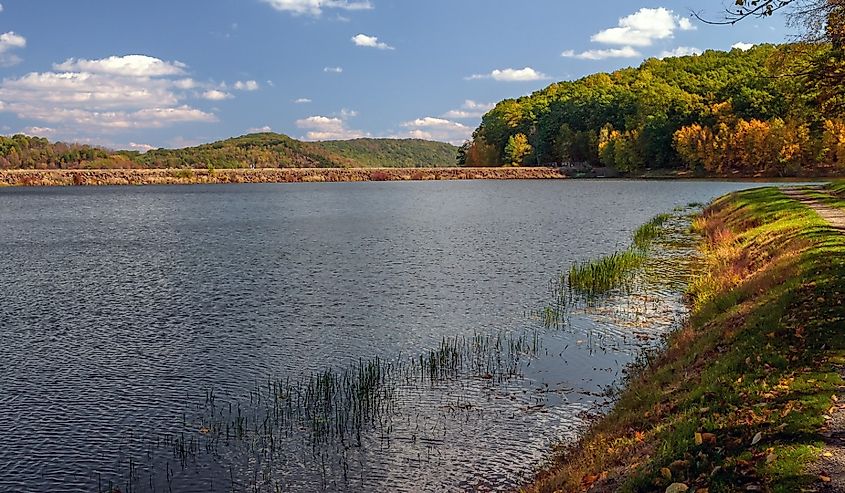
Located in Hunterdon County, the Round Valley Reservoir covers 2,350 acres and reaches approximately 180 feet deep, making it New Jersey’s second-deepest lake and largest reservoir. At full capacity, this lake holds up to 55 billion gallons of water, plenty for boating, kayaking, canoeing, and paddle boarding. With a diverse ecosystem that hosts a variety of wildlife, you can find several snake species here.
Slender and quick-moving, the eastern ribbon snake has yellow stripes along its body, often found near water. These diurnal snakes feed on frogs, salamanders, and freshwater fish. Eastern ribbon snakes are not dangerous and will flee if they encounter a threat.
The copperhead snake is one venomous snake to watch out for. These pit vipers are nocturnal with reddish-brown heads and dark, chestnut-brown, or reddish-brown crossbands. Copperheads may only eat 10 to 12 meals per year, depending on the size of its prey, feeding on mammals, snakes, lizards, turtles, frogs, toads, and insects. If you encounter a copperhead, the best thing you can do is avoid it. Steer clear and give it plenty of space. On the off chance, a copperhead snake bites you seek medical attention immediately.
Atsion Lake
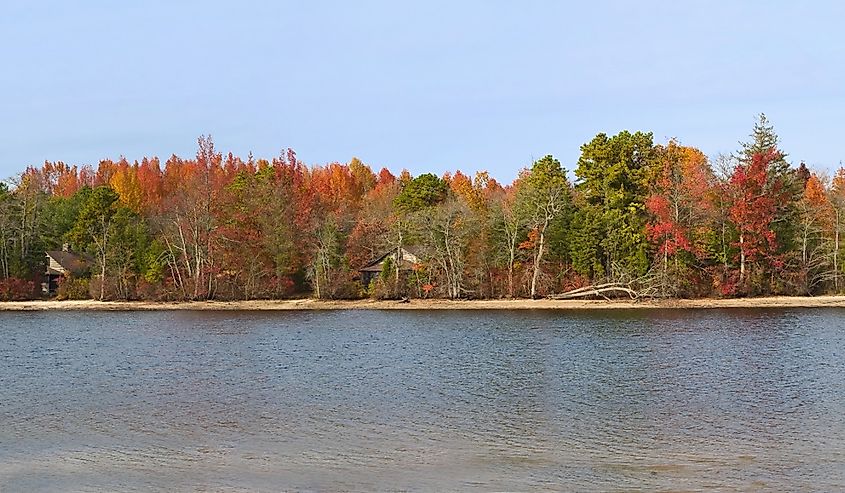
Located in Wharton State Forest, Atsion Lake is one of many and home to a diverse ecosystem. Enjoy scenic hiking trails, canoeing or kayaking, exploring historic Batsto Village, swimming and picnicking, fishing, and camping. While enjoying Atsion Lake, be on the lookout for their snake species, including the northern water snake and timber rattlesnake.
A prevalent species, the northern water snake thrives in the forest’s abundant water sources. You might find these majestic creatures basking on rocks or hunting fish and amphibians. You can recognize them by their gray, tan, buff, or brown bodies and dark bands. These non-venomous snakes are often confused for cottonmouths or copperheads.
Timber rattlesnakes are large vipers with varying coloration. They are gray and have stripes down their backs with occasional pink hues. Their stripes can be orange, yellow, brown, black, or pink. These snakes are ambush predators, eating small rodents, birds, lizards, and amphibians. Though sightings are rare, you may spot timber rattlesnakes high in the trees, or hear the iconic rattle of their tale.
If you see these snakes while enjoying Wharton State Forests’ rivers or lakes, give them space and view from afar as they are venomous. If you encounter a rattlesnake, or hear its rattling, slowly back away. This is a warning sign that they feel threatened and may strike. Seek medical attention if bitten.
Assunpink Lake
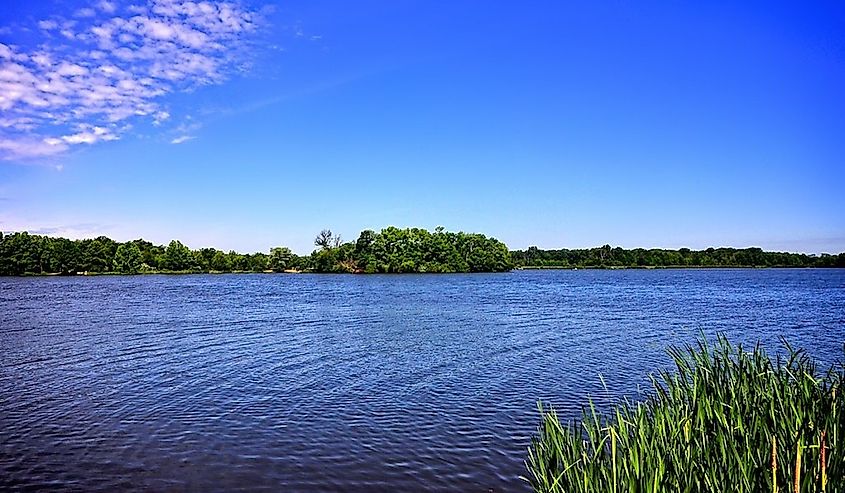
Consisting of 6,393 acres of fields, hedgerows, woods, and wetlands, this lake is one of three located in Assunpink Wildlife Management. Try hunting, fishing, horseback riding, or bird watching here. With a diverse ecosystem, the Assunpink Wildlife Management Area hosts a variety of wildlife, providing good habitats for snakes.
You might see an eastern hog-nosed snake, recognizable by its black or dark-brown splotches and gray, tan, pink, yellow, orange, or red bodies. These snakes enjoy sandy soils, so you might find them near the lake or river. Hog-nosed snakes eat frogs, salamanders, small mammals, birds, and lizards. While mildly venomous, these snakes are typically non-aggressive, with bites being rare.
Another snake you may see is the smooth green snake. These small, bright green snakes are adept at camouflage and can be found in grassy areas. Non-venomous, this snake’s diet consists of caterpillars, crickets, moth larvae, spiders, small insects, slugs, grasshoppers, ants, snails, and worms.
Great Swamp National Wildlife Refuge
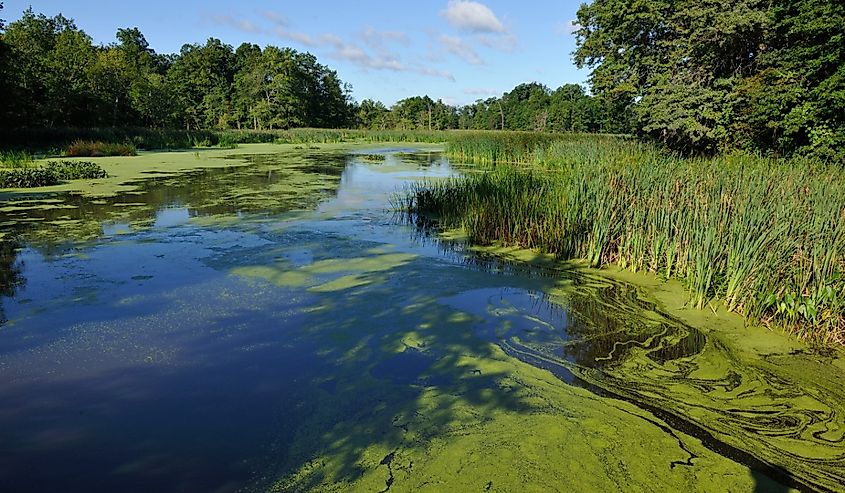
While not a lake, this large wetland area in Morris County is known for its 12-square-mile natural oasis. The 8,000-acre refuge provides outstanding recreational activities to visitors while protecting vital habitat for wildlife. Known for its diverse wildlife, it is a migrating area for waterfowl and a paradise for snakes.
The eastern milk snake, known for its vibrant, blotchy patterns and reddish color, can be found here. These non-venomous snakes are sometimes confused with copperheads but are completely harmless. These snake feast on small mammals such as mice, shrews, and voles, but will eat birds, reptiles, and slugs.
The black rat snake is another familiar site in these wetlands. The largest snake species in New Jersey, black rat snakes, can grow up to 7 feet long. They are excellent climbers and can be found in trees or near bodies of water. Their diet consists of rodents, frogs, lizards, birds, and eggs.
While enjoying your time in one of New Jersey’s many bodies of water, you may encounter a snake. If you bump into one of these majestic creatures keep a few tips in mind to stay safe and minimize bites. Snakes are mostly solitary and shy and will avoid human contact. Never attempt to handle a wild snake. Instead, give it space.
When traversing snake-populated areas, wear appropriate clothing, sturdy boots, and long pants to avoid accidental bites. Most importantly, always stay on the marked trail. Sticking to well-trodden paths reduces the likelihood of a surprise encounter with a snake. By appreciating these fascinating creatures from a safe distance, you can enjoy New Jersey's natural beauty while respecting the local wildlife.











